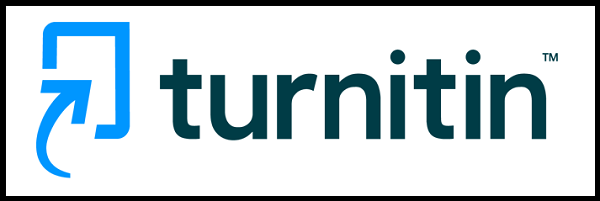Correlation of the Use of Social Media to Antisocial Attitudes in Junior High School Adolescents in Sukoharjo
Keywords:
use of social media, antisocial attitudesAbstract
Social media was a form of electronic communication for sharing information, ideas, personal messages, and other content. Ease and various facilities on social media had an impact on increasing the use of the application. The high intensity of using social media could affect the decrease in adolescent interaction with the surrounding environment. Reduced direct interaction with the real world could lead to antisocial attitudes in adolescents. The purpose of this study was to determine the correlation between social media use and antisocial attitudes among junior high school adolescents in Sukoharjo district. This research was a quantitative study using the correlation method with a cross sectional approach. The research sample used was 60 students who were taken using accidental sampling. The data collection tool used a structured questionnaire that has been tested for validity and reliability. The analysis used in this study is the Pearson product moment test. The result of the research is that there is a correlation between the use of social media and antisocial attitudes with a significance value of p(<0.001)<0.05. The value of 0.652 indicates that the correlation between social media use and antisocial attitudes is in the moderate category with a positive direction. The conclusion was a correlation between the use of social media and antisocial attitudes in junior high school adolescents in Sukoharjo Regency.References
Andarwati, I. (2016). Citra Diri Ditinjau Dari Intensitas Penggunaan Media Jejaring Sosial Instagram Pada Siswa Kelas XI SMA N 9 Yogyakarta. E-Jurnal Bimbingan Dan Konseling, 5(2), 1–12.
Aprinta, G., & Dwi, E. (2017). Hubungan Penggunaan Media Sosial Dengan Tingkat Kepekaan Sosial Di Usia Remaja. The Messenger, 9(1), 65–69.
Cahya Sakti, B., & Yulianto, M. (2018). Penggunaan Media Sosial Instagram Dalam Pembentukan Identitas Diri Remaja. Interaksi Online, 6(4), 490–501. http://www.fisip.undip.ac.id
Fitri, S. (2017). Dampak Positif Dan Negatif Sosial Media Terhadap Perubahan Sosial Anak. Naturalistic: Jurnal Kajian Penelitian Pendidikan Dan Pembelajaran, 1(2), 118–123.
Hamid, F., Rahman, & Morissan. (2015). Pro-sosial, Anti-sosial Pengguna Media Sosial Di Kalangan Generasi Muda. Jurnal Ilmu Ekonomi Dan Sosial, 4(1), 50–66.
Hartinah, S., Sriati, A., Kosasih, C. E., Padjadjaran, U., Padjadjaran, U., Padjadjaran, U., Media, S., & Addiction, S. M. (2019). Gambaran Tingkat Gejala Kecanduan Media Sosial pada Mahasiswa Keperawatan Universitas Padjadjaran. Jurnal Keperawatan BSI, 7(1), 123–133.
Juwita, E. P., Budimansyah, D., & Nurbayani, S. (2015). Peran Media Sosial Terhadap Gaya Hidup Siswa SMA Negeri 5 Bandung. Jurnal Sosietas, 5(1), 1–8.
Krisnaningrum, I., Masrukhi, & Atmaja, H. T. (2017). Perilaku Sosial Remaja Era Globalisasi di SMK Muhammadiyah Kramat, Kabupaten Tegal. Journal of Educational Social Studies, 6(3), 92–98. http://journal.unnes.ac.id/sju/index.php/jess
Kusuma, R. A. (2019). Dampak Perkembangan Teknologi Informasi dan Komunikasi terhadap Perilaku Intoleransi dan Antisosial di Indonesia. Mawa’izh: Jurnal Dakwah Dan Pengembangan Sosial Kemanusiaan, 10(2), 273–290. https://doi.org/10.32923/maw.v10i2.932
Nur, Z., & Agustang, A. (2019). Kontrol Sosial Orangtua Terhadap Penggunaan Smartphone Pada Remaja (Studi Di Desa Giring-Giring Kecamatan Bontonmpo Kabupaten Gowa). Jurnal Sosialisasi Pendidikan Sosiologi, 6(2), 68–73.
Paramitha Sari, N., Sudaryanto, E., & Chairus Nasution, U. (2018). Dampak Media Sosial Line Terhadap Perilaku Antisosial Di Kalangan Remaja Gunungsari Surabaya. Representamen, 4(1), 1–8.
Putriny, W. K., Bidjuni, S. H., & Wowiling, F. (2015). Hubungan Durasi Penggunaan Media Sosial Dengan Kejadian Insomnia Pada Remaja Di SMA Negeri 9 Manado. Ejournal Keperawatan (e-Kp) Volume, 3(1), 1–10.
Rahayu, F. S., Kristiani, L., & Wersemetawar, S. F. (2019). Dampak Media Sosial terhadap Perilaku Sosial Remaja di Kabupaten Sleman, Yogyakarta. Prosiding Seminar Nasional Inovasi Teknologi, 39–46.
Setiawan, D., Rahman, A., & Ramadhan, I. (2019). Pengaruh Media Sosial Terhadap Akhlak Siswa (Studi Kasus Di Lembaga Pendidikan Fikar School). Mozaic Nusantara, 5(1), 73–84.
Syah, R., & Hermawati, I. (2018). The Prevention Efforts on Cyberbullying Case for Indonesian Adolescent Social Media Users. Jurnal PKS, 17(2), 131–146.
Tristy, W. L. (2017). Penggunaan Jejaring Sosial Dengan Konsep Heppy (Help People Around You) Sebagai Strategi BK Dalam Menumbuhkan Empati Peserta Didik. Prosiding Seminar Bimbingan Dan Konseling, 1(1), 408–416. http://pasca.um.ac.id/conferences/index.php/snbk
Wahyuningsih, D. (2017). Pengaruh Intensitas Penggunaan Smartphone Dan Pengawasan Orangtua Terhadap Perilaku Antisosial (Kasus Penggunaan Smartphone Dan Pengawasan Orangtua Siswa SMP Purnama 3 Semarang Terhadap Munculnya Perilaku Antisosial). Interaksi Online, 5(2), 1–12.
Widia, R. A., & Faizun, Q. (2019). Pengaruh Penggunaan Media Sosial Terhadap Penguatan Karakter Remaja. Prosiding Seminar Nasional Pengembangan Karakter Dalam Menghadapi Era Revolusi Industri 4.0, 130–133.
Downloads
Published
How to Cite
Issue
Section
License
Copyright (c) 2021 IJMS - Indonesian Journal on Medical Science

This work is licensed under a Creative Commons Attribution-NonCommercial-ShareAlike 4.0 International License.













